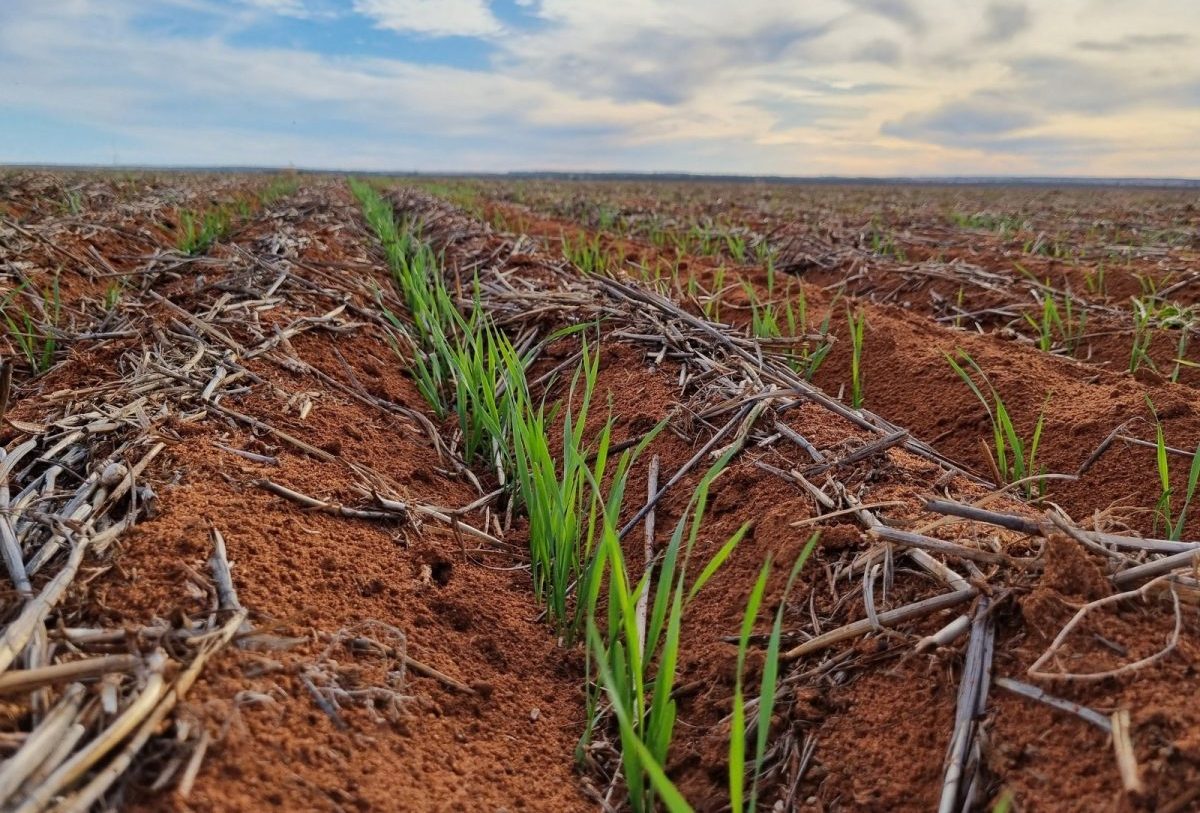
A crop of Valiant CL Plus wheat sown in late April at Yilgarn, WA, shows good establishment. Photo: InterGrain
THE 2023 grain-growing season is shaping up to be one of extremes already, according to the Grain Industry of Western Australia’s first monthly report to estimate area for the winter crop now being planted.
Cropped area is likely to be back to around 8.2-8.3 million hectares, a drop from 2022 of about 8 per cent.
For the calendar year so far, a big swath of country in the centre of the state has received enough rain to bog machinery, while there are other growers who have received very little rain.
The predicted low-decile year is certainly shaping up for some regions, while others could be forgiven for thinking they are on a different planet.
Climate models are convinced it is going to be a drier-than-average winter, with sea temperatures and
position of blocking high-pressure systems seeming to indicate this is likely to be the case.
While it is early days, and accuracy of predictions in the past have been low for this time of year, growers in regions of the state where there has been lower falls of rain are adjusting planned sown areas back significantly from 2022.
Seeding will wind up for most growers by the end of next week.
Historically this will be an early finish and is a reflection of the early rains in March that got everyone going, and the reduction in area sown in the dry areas.

The hesitancy to not over-commit on the back of a couple of good years has been reflected in the reduction in area of lupins, beans and chickpeas, and the higher-risk crops such as canola being
substituted to wheat or left out to pasture or fallow.
This could increase slightly if more rain falls over the next few weeks.
Canola area is down around 18pc on 2022, which is more a reflection of the timing and amount of
rainfall across the zones rather than the reduction in price from 2022.
Wheat area will be back slightly from 2022 due to the ongoing dry conditions in the north of the state, and the low-rainfall fringes further south opting for an increase in fallow from 2022.
Barley area will be back slightly from the substitution to wheat which has continued on in a once barley dominated region of the state.
Lupins will be down as well, mostly reflected by reduced plantings in the Geraldton Port Zone.
The kick in oat plantings from slightly higher prices offered during seeding did not eventuate, and area planted will be the same or slightly down on 2022.
Fringe pulse crops are also down in area due to current low prices.
Potential grain production for 2023 will certainly now not match the high of 2022 or 2021.
The reduced area planted, the lack of subsoil moisture in the top third of the state’s grain growing region, and the percentage of crop still not out of the ground, will add up to significantly reduced potential tonnage production in 2023.
Source: GIWA
Further detail on crop conditions in individual WA port zones can be found on the GIWA website.

HAVE YOUR SAY